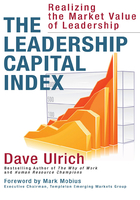
Understand External Business Drivers
Strategic proficiency requires a point of view about the future of the leader’s industry. This point of view comes from understanding both the general business conditions that affect the industry and the specific expectations of key stakeholders in the industry.
Table 4.1. Approaches to Strategy Key Dimensions of Strategic Proficiency That Create Overall Strategic Approach


a. Ram Charan has presented his areas of strategic know-how in many settings. They are found in his writing: Ram Charan, What the CEO Wants You to Know: How Your Company Really Works (New York: Crown Business, 2001); Larry Bossidy, Ram Charan, and Charles Buck, Execution: The Discipline of Getting Things Done (New York: Crown Business, 2009); Ram Charan, Global Tilt: Leading Your Business through the Great Economic Power Shift (New York: Crown Business, 2013).
b. Richard Rumelt, Good Strategy/Bad Strategy: The Difference and Why It Matters (New York: Crown Business, 2011).
c. A. G. Lafley and Roger Martin, Playing to Win: How Strategy Really Works (Boston: Harvard Business Press, 2013).
d. Robert Kaplan and David Norton, Strategy Maps: Converting Intangible Assets into Tangible Outcomes (Boston: Harvard Business Press, 2004); Robert Kaplan and David Norton, The Strategy Focused Organization: How Balanced Scorecard Companies Thrive in the New Business Environment (Boston: Harvard Business Press, 2000); Robert Kaplan and David Norton, Alignment: Using the Balanced Scorecard to Create Corporate Synergies (Boston: Harvard Business Press, 2006).
e. Robert Simons, Seven Strategy Questions: A Simple Approach for Better Execution (Boston: Harvard Business Press, 2010).
f. W. Chan Kim and Renee Mauborgne, Blue Ocean Strategy: How to Create Uncontested Market Space and Make the Competition Irrelevant (Boston: Harvard Business Press, 2005); W. Chan Kim and Renee Mauborgne, "Blue Ocean Leadership,” Harvard Business Review (May 2014).
g. Gary Hamel and CK Prahalad, "Strategic Intent,” Harvard Business Review (May-June 1989); Gary Hamel, What Matters Now: How to Win in a World of Relentless Change, Ferocious Competition, and Unstoppable Innovation (San Francisco: Jossey Bass, 2012).
h. Michael Porter, Competitive Strategy: Techniques for Analyzing Industries and Competitors (New York: Free Press, 1998); Michael Porter, On Competition (updated and expanded) (Boston: Harvard Business Press, 2008); Joan Margetta, Understanding Michael Porter: The Essential Guide to Competition and Strategy (Boston: Harvard Business Press, 2011).
General business conditions provide opportunities for redefining industries and building blue ocean strategies that create a future. Investors can explore the extent to which leaders have a framework for thinking about the future. In our work on understanding future business conditions, my colleagues and I have identified six dimensions of business context, each of which might open new business opportunities. Perceiving trends in each dimension enables leaders to reshape their industry and organization. Table 4.2 summarizes this logic and gives a number of examples where leaders identified a general business trend and then created a firm that redefined the industry.
Leaders who understand general business conditions can anticipate and create new business opportunities and thus tap into the innovation premium that comes from being an industry leader. Investors can audit the extent to which leaders have the ability to readily grasp external trends that lead to innovation.
Investors can audit the extent to which leaders have the ability to readily grasp external trends that lead to innovation.

When leaders understand general business conditions, they are also able to shift their thinking about key stakeholders. One investor asks leaders to explain how they interact with government. He found that in many industries regulation and government support was key to firm success. He was particularly interested in emerging markets when leaders moved from a corruption (bribery, hidden contracts) to a collaborative (government-industry joint problem solving) stance with government.
Another key stakeholder for investors to consider is customers. How do leaders define key customers? By looking backward or forward? By considering local or global customers? Do leaders prioritize customers? For targeted customers, do leaders understand how to move from service to partnering to anticipation? Serving customers means that leaders know who their customers are and what they want. Partnering with customers means building intimacy with customers by becoming more connected with them. Anticipating customers means seeing what customers don’t yet have and foreseeing what customers would value in the future. Leaders who anticipate the needs of target customers delight them and create more value. Most of the firms in the right-hand column of Table 4.2 had leaders who recognized business trends, which enabled them to anticipate customer needs and create innovative products or services to shape an industry.
Investors can assess how well leaders anticipate general business conditions, serve key stakeholders, and derive subsequent business implications. This means that investors might track where leaders spend time and who they spend it with. Are the leaders consistently accessing information about trends in their industry? Are they spending time with lighthouse customers? Are they asking about what’s next? How are they sourcing information about trends that might affect their industry?
Possible indicators:
 Do leaders have a framework for thinking about future trends that might shape their industry?
Do leaders have a framework for thinking about future trends that might shape their industry?
 Do leaders source information about future business trends?
Do leaders source information about future business trends?
 Do leaders have an innovation premium because they turn opportunities into products or services?
Do leaders have an innovation premium because they turn opportunities into products or services?
 Do leaders move from customer service to anticipation by foreseeing what customers may want in the future?
Do leaders move from customer service to anticipation by foreseeing what customers may want in the future?

